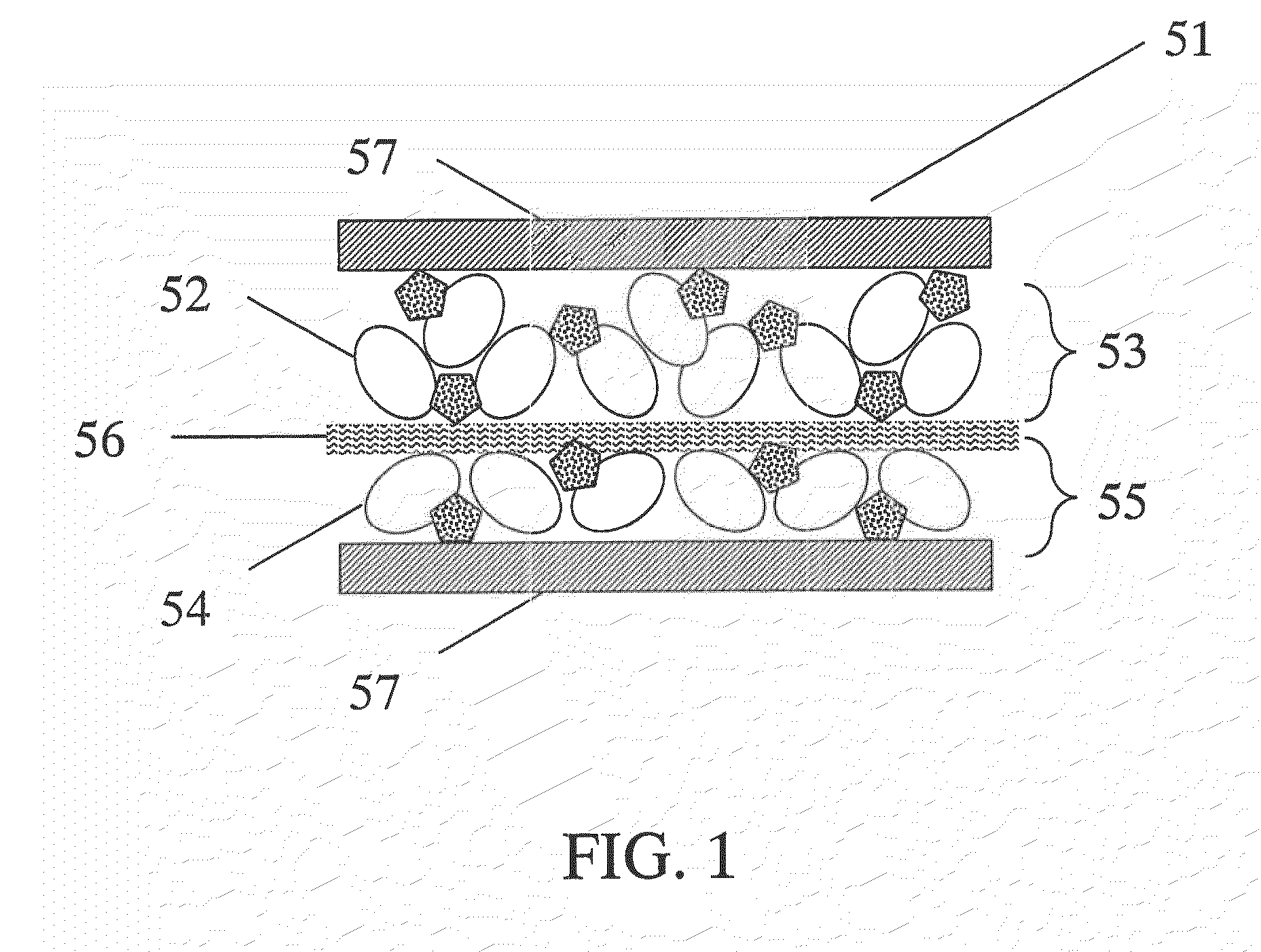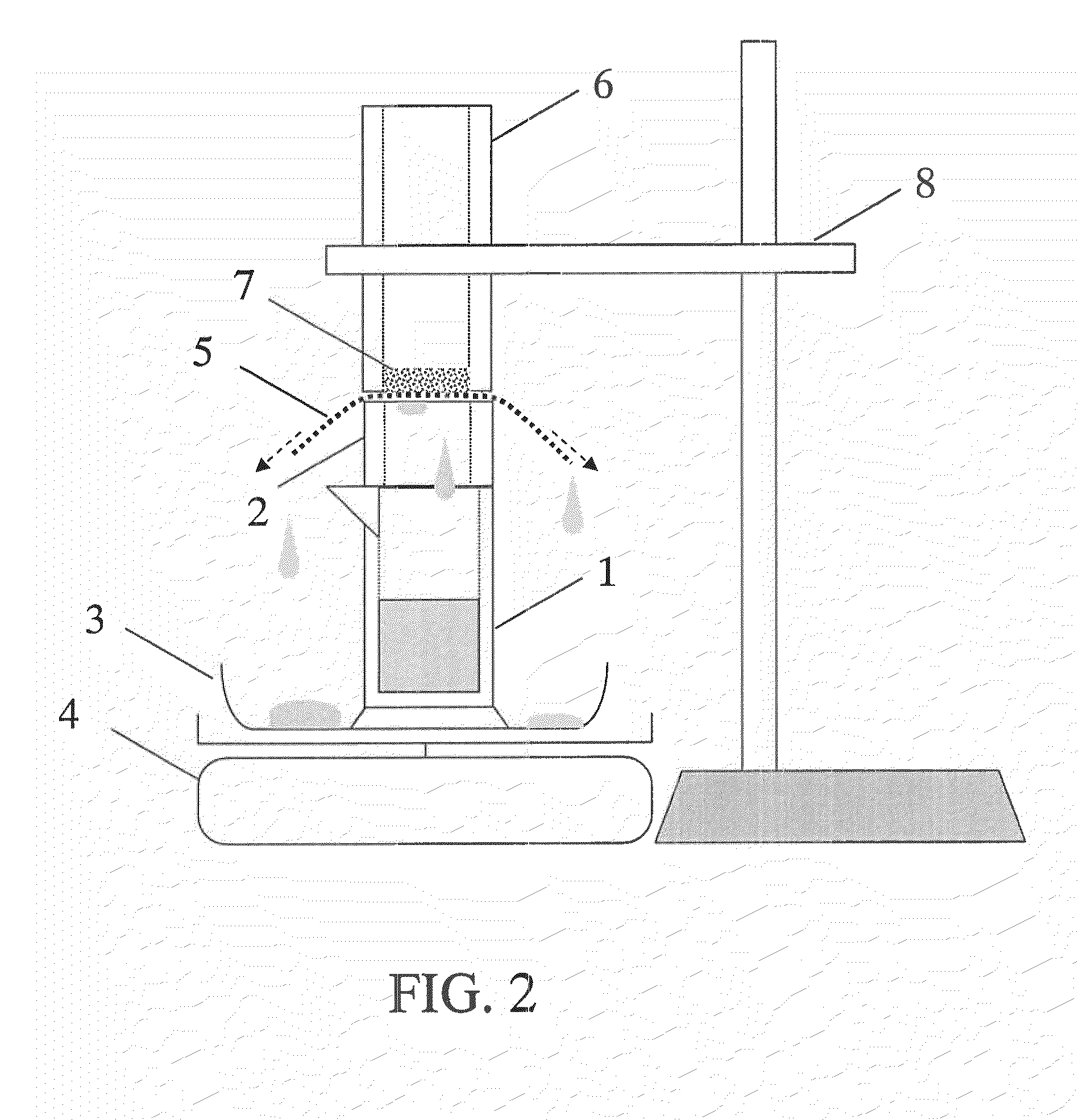Water-absorbent sheet composition
a water-absorbent sheet and composition technology, applied in the field of thin water-absorbent sheet composition, can solve the problems of reducing the diffusibility of liquid, slowing down the permeation rate of absorbent material, and internal water-absorbent resin being incapable of efficiently absorbing liquid
- Summary
- Abstract
- Description
- Claims
- Application Information
AI Technical Summary
Benefits of technology
Problems solved by technology
Method used
Image
Examples
example 1
[0113]A roller spreader (manufactured by HASHIMA CO., LTD., SINTERACE M / C) was charged at its supplying inlet with a mixture prepared by homogeneously mixing 55 parts by mass of an ethylene-vinyl acetate copolymer (melting temperature: 95° C.) as an adhesive and 270 parts by mass of a sodium polyacrylate crosslinked product (manufactured by Sumitomo Seika Co., Ltd., AQUAKEEP SA55SX-II, median particle size: 360 μm; water-absorption rate of saline solution: 42 seconds, water retention capacity of saline solution: 35 g / g) as a water-absorbent resin. On the other hand, a hydrophilic nonwoven fabric made of rayon having a width of 30 cm (basis weight: 45 g / m2, rayon content: 100%) was spread over a conveyor at the bottom part of the spreader. Next, the spreading roller and the bottom part conveyor were operated, thereby allowing the above-mentioned mixture to evenly overlay over the above-mentioned nonwoven fabric at a basis weight of 325 g / m2.
[0114]The overlaid product obtained was pre...
examples 2 to 6
[0117]A water-absorbent sheet composition was obtained in the same manner as in Example 1, except that materials listed in Table 1 were used in place of rayon as a hydrophilic nonwoven fabric, tissue paper as a water-permeable substrate, and an ethylene-vinyl acetate copolymer as an adhesive, in Example 1. Incidentally, in Examples 3 and 6, only the water-absorbent resin used in the secondary absorbent layer was changed to a sodium polyacrylate crosslinked product (manufactured by Sumitomo Seika Co., Ltd., AQUAKEEP 10SH-PB, median particle size: 320 μm, water absorption rate of saline solution: 3 seconds, water-retention capacity of saline solution: 42 g / g), without changing the water-absorbent resin used in the primary absorbent layer. In addition, in Examples 5 and 6, the amount of the water-absorbent resin and the amount of the adhesive were changed as listed in Table 1. The details of other materials are given hereinbelow.
[0118]Rayon-PET: basis weight: 50 g / m2, rayon content: 70...
PUM
| Property | Measurement | Unit |
|---|---|---|
| Length | aaaaa | aaaaa |
| Time | aaaaa | aaaaa |
| Length | aaaaa | aaaaa |
Abstract
Description
Claims
Application Information
 Login to View More
Login to View More - R&D
- Intellectual Property
- Life Sciences
- Materials
- Tech Scout
- Unparalleled Data Quality
- Higher Quality Content
- 60% Fewer Hallucinations
Browse by: Latest US Patents, China's latest patents, Technical Efficacy Thesaurus, Application Domain, Technology Topic, Popular Technical Reports.
© 2025 PatSnap. All rights reserved.Legal|Privacy policy|Modern Slavery Act Transparency Statement|Sitemap|About US| Contact US: help@patsnap.com



